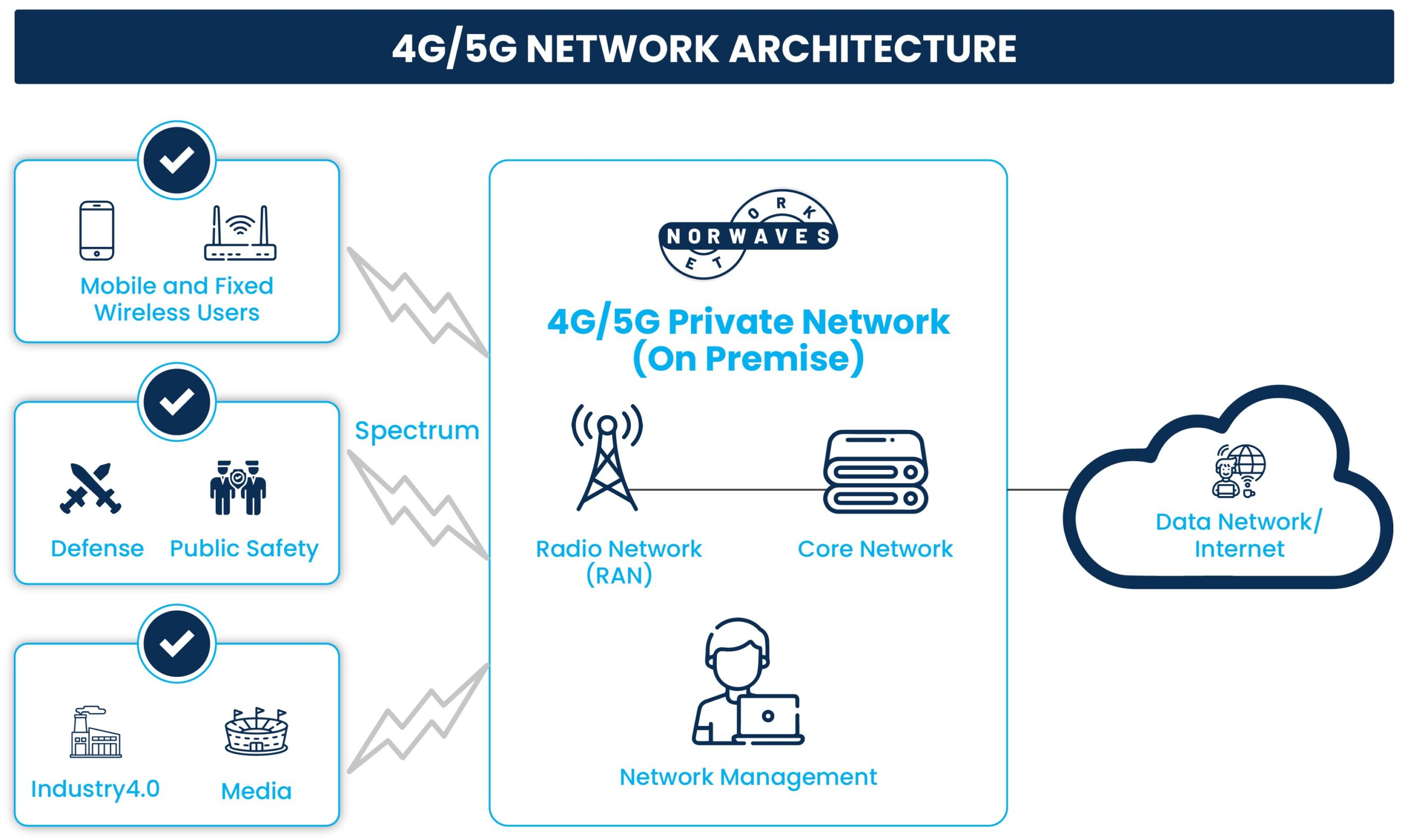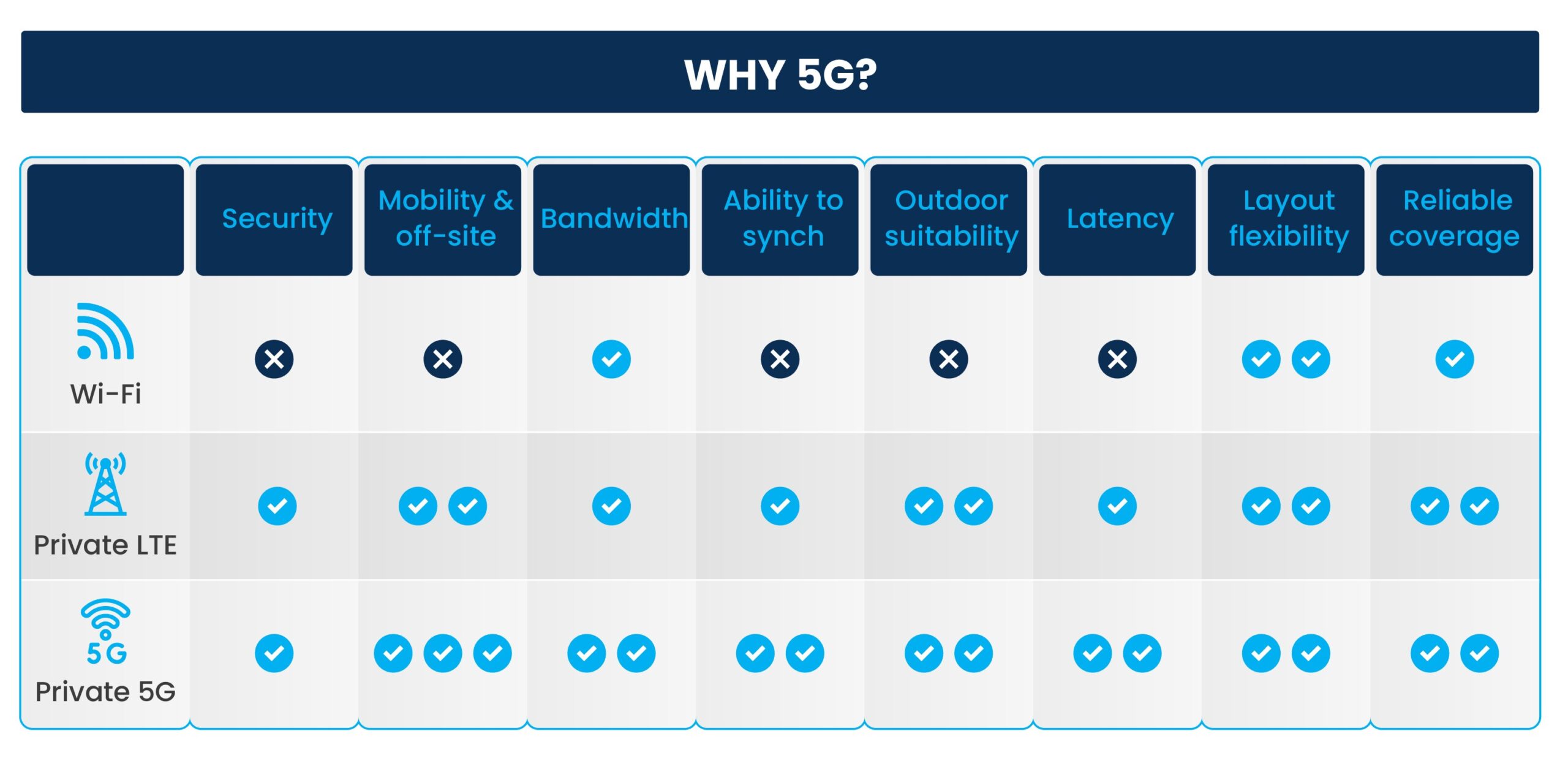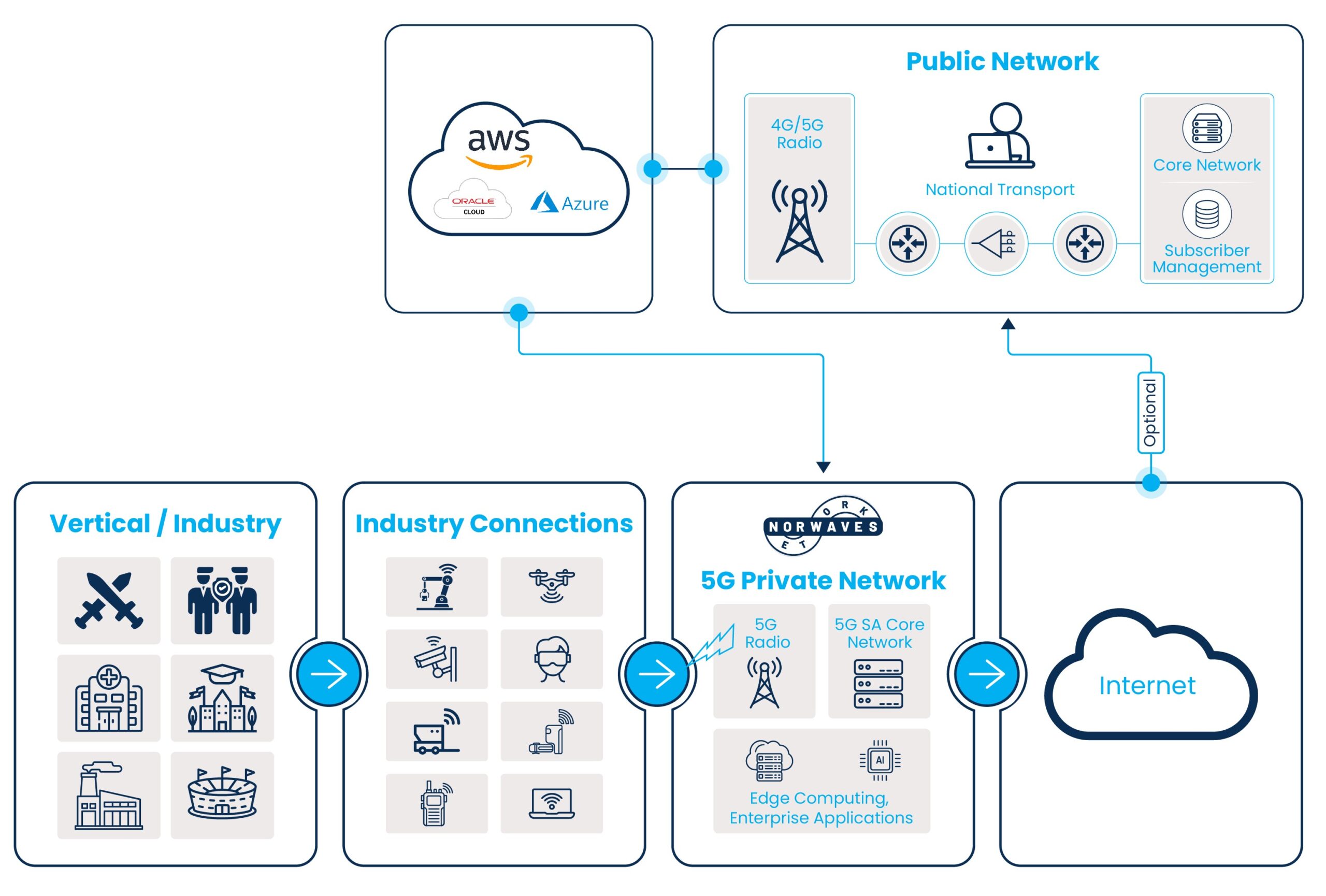SERVICES
What We Do
Unleash Next Generation Connectivity

Ideation Services

Advanced Integration

Cloud Services

Test and Handover
Empower Your Business with Private Wireless Solutions
- What is Private Network?
- Why 5G Private Network?
- Benefits of 5G Private Network:
- 4G,5G, and Wi-Fi
- Private Network in conjunction with Public Network & Cloud
- Deploying Private Wireless Networks
A private network is a wireless infrastructure designed exclusively for an individual enterprise, providing communication connectivity for both people and devices. Typically deployed within specific enterprise-owned or occupied locations, such as airports, factories, hospitals, or mines, this network is controlled by the enterprise itself. Differing from publicly accessible nationwide networks, private networks are exclusively open to authorized personnel (employees) and devices (such as machines, sensors, robots, VR/AR equipment, AGVs, etc.) that fulfill specific enterprise roles. These networks can function on owned, leased, or unlicensed frequency spectrums, with licensed spectrum options made available through NKOM in Norway. One key advantage of private networks is their ability to process enterprise data locally, within the dedicated network infrastructure, ensuring a higher level of security, data privacy, coverage, and reliability. In today’s competitive global landscape, digitalization has emerged as a crucial economic driver among countries. Enterprises are increasingly focusing on enhancing productivity, efficiency, cost reduction, equipment upgrades, and technology modernization through digital transformation. In addition to traditional communication tools like smartphones and PCs, private networks cater to specialized communication needs, including robots, drones, AR/VR systems, and Automated Guided Vehicles (AGVs), all interconnected and processed within the confines of the enterprise premises.
5G unlocks a host of new possibilities, offering enhanced Mobile Broadband (eMBB) for applications like VR/AR, ultra-low latency for real-time services (uRLLC) such as autonomous driving, and support for massive connections (mMTC) like sensors and IoT devices.


A private 4G/5G network adheres to global 3GPP standards, the same standards used by public mobile operators for cellular technologies (2G, 3G, 4G, and 5G). In contrast, Wi-Fi is based on IEEE standards, typically employed in homes and offices for internet access. 3GPP cellular technologies are purpose-built for full mobility, carrier-grade reliability, robust security (including physical SIM authentication), and comprehensive coverage. This makes them suitable for both IT needs (akin to Wi-Fi) and enterprise OT requirements, such as machines and robots.
It’s important to note that both technologies are continually evolving, and in some scenarios, they may complement each other. For instance, Wi-Fi can be used for in-vehicle applications like connected cars, while 5G cellular networks may connect the vehicles themselves.

Private networks leverage cutting-edge technologies such as 5G Radio, Network Slicing, edge computing, Cloud, and AI-powered applications. These innovations drive productivity, efficiency, and automation, making private networks an ideal solution for enterprise digital transformation. These networks can seamlessly connect to public networks and public clouds, including Amazon, Microsoft, and Google, as needed, enhancing their versatility.

Deploying a Private Wireless Network shares many similarities with setting up a Wi-Fi network, with a few additional considerations. The fundamental prerequisites for establishing a private wireless network encompass:
- Radio Access Network (RAN): This provides coverage for both outdoor and indoor areas, similar to Wi-Fi but with fewer access points needed.
- Core Network (Cloud Core): Unlike Wi-Fi, a Core Network is essential for facilitating mobility, ensuring security, and maintaining quality-of-service standards.
- Backhaul Network (Fiber/Microwave): The backhaul network is responsible for connecting various network components. It can utilize technologies such as cabled Ethernet, passive optical LAN, or microwave, depending on the specific application and distance requirements.
- Radio Spectrum (Private, Shared with MNO, or Unlicensed): Access to radio spectrum is a crucial consideration, which can be private, shared with a Mobile Network Operator (MNO), or unlicensed.
Depending on the area to be covered, you can manage the network using a compact edge server, no larger than a desktop computer, which can be deployed in a server room, or manage the network from a centralized and remote location, such as the headquarters.
A private network is a wireless infrastructure designed exclusively for an individual enterprise, providing communication connectivity for both people and devices. Typically deployed within specific enterprise-owned or occupied locations, such as airports, factories, hospitals, or mines, this network is controlled by the enterprise itself. Differing from publicly accessible nationwide networks, private networks are exclusively open to authorized personnel (employees) and devices (such as machines, sensors, robots, VR/AR equipment, AGVs, etc.) that fulfill specific enterprise roles. These networks can function on owned, leased, or unlicensed frequency spectrums, with licensed spectrum options made available through NKOM in Norway. One key advantage of private networks is their ability to process enterprise data locally, within the dedicated network infrastructure, ensuring a higher level of security, data privacy, coverage, and reliability. In today's competitive global landscape, digitalization has emerged as a crucial economic driver among countries. Enterprises are increasingly focusing on enhancing productivity, efficiency, cost reduction, equipment upgrades, and technology modernization through digital transformation. In addition to traditional communication tools like smartphones and PCs, private networks cater to specialized communication needs, including robots, drones, AR/VR systems, and Automated Guided Vehicles (AGVs), all interconnected and processed within the confines of the enterprise premises.
5G unlocks a host of new possibilities, offering enhanced Mobile Broadband (eMBB) for applications like VR/AR, ultra-low latency for real-time services (uRLLC) such as autonomous driving, and support for massive connections (mMTC) like sensors and IoT devices.


A private 4G/5G network adheres to global 3GPP standards, the same standards used by public mobile operators for cellular technologies (2G, 3G, 4G, and 5G). In contrast, Wi-Fi is based on IEEE standards, typically employed in homes and offices for internet access. 3GPP cellular technologies are purpose-built for full mobility, carrier-grade reliability, robust security (including physical SIM authentication), and comprehensive coverage. This makes them suitable for both IT needs (akin to Wi-Fi) and enterprise OT requirements, such as machines and robots.
It’s important to note that both technologies are continually evolving, and in some scenarios, they may complement each other. For instance, Wi-Fi can be used for in-vehicle applications like connected cars, while 5G cellular networks may connect the vehicles themselves.

Private networks leverage cutting-edge technologies such as 5G Radio, Network Slicing, edge computing, Cloud, and AI-powered applications. These innovations drive productivity, efficiency, and automation, making private networks an ideal solution for enterprise digital transformation. These networks can seamlessly connect to public networks and public clouds, including Amazon, Microsoft, and Google, as needed, enhancing their versatility.

Deploying a Private Wireless Network shares many similarities with setting up a Wi-Fi network, with a few additional considerations. The fundamental prerequisites for establishing a private wireless network encompass:
- Radio Access Network (RAN): This provides coverage for both outdoor and indoor areas, similar to Wi-Fi but with fewer access points needed.
- Core Network (Cloud Core): Unlike Wi-Fi, a Core Network is essential for facilitating mobility, ensuring security, and maintaining quality-of-service standards.
- Backhaul Network (Fiber/Microwave): The backhaul network is responsible for connecting various network components. It can utilize technologies such as cabled Ethernet, passive optical LAN, or microwave, depending on the specific application and distance requirements.
- Radio Spectrum (Private, Shared with MNO, or Unlicensed): Access to radio spectrum is a crucial consideration, which can be private, shared with a Mobile Network Operator (MNO), or unlicensed.
Depending on the area to be covered, you can manage the network using a compact edge server, no larger than a desktop computer, which can be deployed in a server room, or manage the network from a centralized and remote location, such as the headquarters.

